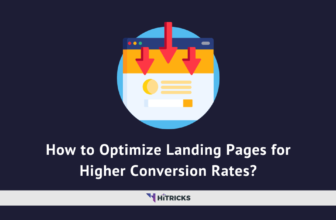There are many elements to consider when you’re starting a blog. From learning how to create your own blog, brainstorming what to write, optimizing your content for search engines, to monitoring your blog’s traffic – these tasks can be time-consuming.
This is where blogging tools come into play. With so many different blogging tools ava21ilable, choosing the ones that fit your needs can be challenging. While you can always buy a link building package, in today’s article, we’ll explore several top useful tools for blogging to facilitate your content creation process and maximize your blogging efforts.
Here’s an overview:
SEO: Yoast SEO
This popular WordPress plugin can help boost your blog’s visibility on search engine results pages (SERPs). Yoast SEO optimizes your content more efficiently by performing search engine optimization (SEO) analysis and providing targeted suggestions via the WordPress block editor. This is convenient as you won’t have to switch to another tab or open a different document.
The plugin will show how your blog post appears on Google search results. This enables you to tweak SEO elements like the meta description and title tags to be more engaging and keyword-rich. In addition, Yoast SEO analyzes content readability based on transition words, word complexity, and sentence length.
Keyword Research: Keyword Surfer
Conducting keyword research helps generate both SEO-friendly and relevant content for your audience. Using this free Chrome extension, Keyword Surfer provides insights into the monthly search volume of your target keywords in a selected region. It also shows how many times a web page mentions the keyword.
Once installed, it will automatically run whenever you perform a Google search. You’ll see a list of keyword ideas, related keywords, and correlation charts on the right-hand side of your browser. It’ll also show the top-ranking websites for your searched keywords.
We also recommend using Google Trends to understand the latest search trends so you can narrow down your blog ideas.
Content Writing: Google Docs
Google Docs is a great tool that brings simplicity and efficiency to content writing. It also lets you restore any deleted sentences, paragraphs, or sections with the “Version History” feature. What’s more, you can instantly export Google Docs into several formats like .docx, .pdf, or .html.
This free Google application is also one of the best collaboration tools as it enables users to manage editing permissions. In addition, it features numerous add-ons like Writing Habit and OneLook Thesaurus to enhance the writing experience.
Writing Habit lets you set daily and weekly word count goals to keep track of your progress and stay motivated to write. Meanwhile, OneLook Thesaurus is a helpful add-on that helps bloggers write with more engaging and diverse language.
Content Editing: Grammarly
Editing helps ensure readers can quickly grasp your blog posts. Grammarly is an excellent tool for improving your writing skills and producing better content. By installing the extension on your web browser, the free version highlights spelling, punctuation, and basic grammar mistakes in your emails, articles, or social media content.
Purchasing the premium version at $12/month gives you access to Grammarly’s more advanced features, including tone adjustments, full-sentence rewrites, plagiarism detection, and citation suggestions. In addition, it helps improve your vocabulary by suggesting better alternatives to overused phrases and passive sentences.
Content Management System: WordPress
Choose a robust content management system (CMS) like WordPress to store and manage all your blog’s content and media files. This blogging platform has an intuitive interface that enables anyone to build and manage content without technical knowledge.
With thousands of themes available, it’s easy to customize the website’s look and feel based on your brand persona. In addition, WordPress has numerous plugins to add more functionality to your blog.
For example, you can add eCommerce features, enhance the site’s performance and security, add comment sections or social sharing buttons, as well as compress large media files.
Online Ads: Google AdSense
Google AdSense is an excellent blogging tool to monetize your own blog by selling advertising space. Using the pay-per-click (PPC) model, you’ll earn a commission each time someone clicks or views your ad.
AdSense is completely free to use. Once you’ve signed up, Google will review your site based on its program policies. Here’s a quick overview of how it works:
- Paste the ad code on your website to make the ad spaces available. Choose between text, images, or videos as the type of ads to display. Then, specify where you want the ads to appear.
- Advertisers compete to secure an ad space on your website in a real-time auction. Then, Google will suggest the most relevant and highest-paying ads for your blog.
- Google will pay your commission once the billing process from the advertisers is complete.
Design: Canva
Appealing and creative visuals can attract more readers to visit, explore, and share your blog content on their social media platforms. Canva is a free online graphic design tool offering extensive free templates and stock photos to create impressive visual content like original blog images, social media posts, logos, or infographics.
With the intuitive drag-and-drop functionality, you can easily customize each project’s fonts, text sizes, images, backgrounds, frames, and colors. Canva’s Pro version starts at $119.99/year for up to 5 users and enables you to access features like premium templates and stock images, a background remover, a design resizer, 100GB cloud storage, and 100 Brand Kits.
Social Media Marketing: Buffer
Instead of manually posting and scheduling your social media content, utilize a social media marketing tool like Buffer to streamline the process. Its free plan allows users to connect up to three social media platforms such as Twitter, Facebook, TikTok, and Instagram.
If you opt for Buffer’s Essentials plan, which starts at $5/month, it comes with analytics tools to track key metrics such as impressions, engagement, and new followers. These insights help you determine the best time to post content and identify the types of posts that resonate with audiences the most.
Email Marketing: MailChimp
Email marketing is an excellent content marketing strategy to amplify your blog’s reach. MailChimp’s free plan lets you create email campaigns, forms, and landing pages using pre-designed templates. Moreover, you can have up to 2,000 contacts and send a maximum of 10,000 emails/month, with a daily limit of 2,000.
Meanwhile, MailChimp’s paid plans start at $11/month and include an A/B testing feature. This lets users test different versions of an email marketing campaign to see if implementing different subject lines, images, layouts, or delivery times can impact its performance.
Analytics: Google Analytics
The last blogging tool on this list is Google Analytics. It helps identify the source of your blog traffic and which blog posts resonate with your audience the most. Use this information to improve content quality and formulate more effective marketing strategies.
Google Analytics is a free tool, so it’s excellent for beginners. Let’s look at some key metrics that Google Analytics monitor:
- Pageviews. Every time a user clicks or refreshes a page on your site, it counts as one pageview.
- Sessions. A single session is when a user visits your web page. A session ends once the user leaves or goes inactive after 30 minutes.
- Users. Users initiate a session, and Google Analytics identifies new and returning users based on each visitor’s browser cookies.
- Bounce rate. It measures the percentage of users who click out of your website before completing an action, like browsing another web page.
Conclusion:
Blogging tools are crucial in helping to make your day-to-day blogging activities much more manageable. They come in handy whenever you need to brainstorm blog topics, write engaging content, promote your blog, and improve your overall SEO and digital marketing initiatives.
To recap, here are the top 10 best blogging tools:
- SEO – Yoast SEO
- Keyword research – Google Trends
- Content writing – Google Docs
- Content editing – Grammarly
- Content management system – WordPress
- Online Ads – Google Ads
- Design – Canva
- Social media marketing – Buffer
- Email marketing – MailChimp
- Analytics – Google Analytics
Now that you’re familiar with the best blogging tools, it’s time to maximize your blog’s success. Want to recommend another tool? Feel free to share your favorite writing tools or other free blogging tools in the comments section.
Nirmal Sarkar is a Biotechnologist from the city of Joy, Kolkata. He is the founder of this blog and covers a wide range of topics from Gadgets to Software to Latest Offers. You can get in touch with him via nirmal@hitricks.com









